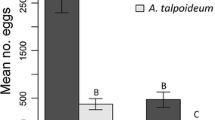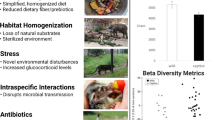Abstract
Although interest in the ecological impacts of invasive species has largely focused on negative effects, some native taxa may benefit from invader arrival. In tropical Australia, invasive cane toads (Bufo marinus) have fatally poisoned many native predators (e.g., marsupials, crocodiles, lizards) that attempt to ingest the toxic anurans, but birds appear to be more resistant to toad toxins. We quantified offtake of dead (road-killed) cane toads by raptors (black kites (Milvus migrans) and whistling kites (Haliastur sphenurus)) at a site near Darwin, in the Australian wet-dry tropics. Raptors readily took dead toads, especially small ones, although native frogs were preferred to toads if available. More carcasses were removed in the dry season than the wet season, perhaps reflecting seasonal availability of alternative prey. Raptors appeared to recognize and avoid bufotoxins, and typically removed and consumed only the toads’ tongues (thereby minimizing toxin uptake). The invasion of cane toads thus constitutes a novel prey type for scavenging raptors, rather than (as is the case for many other native predators) a threat to population viability.




Similar content being viewed by others
References
Beckmann C, Shine R (2009) Impact of invasive cane toads on Australian birds. Conserv Biol 23:1544–1549
Breeden K (1963) Cane toad (Bufo marinus). Wildl Australia 1:31
Brown GP, Phillips BL, Webb JK, Shine R (2006) Toad on the road: use of roads as dispersal corridors by cane toads (Bufo marinus) at an invasion front in tropical Australia. Biol Conserv 133:88–94
Burnett S (1997) Colonizing cane toads cause population declines in native predators: reliable anecdotal information and management implications. Pac Conserv Biol 3:65–72
Caldow RWG, Stillman RA, Sealvd D, West AD, McGrorty S, Goss-Custard JD, Wood PJ, Humphreys J (2007) Benefits to shorebirds from invasion of a non-native shellfish. Proc R Soc B 274:1449–1455
Chen KK, Chen AL (1933) Notes on the poisonous secretions of twelve species of toads. J Pharmacol Exp Ther 56:1535–1541
Cogger HG (2000) Reptiles and amphibians of Australia. Reed New Holland, Sydney
Crossland MR, Brown GP, Anstis M, Shilton CM, Shine R (2008) Mass mortality of native anuran tadpoles in tropical Australia due to the invasive cane toad (Bufo marinus). Biol Conserv 141:2387–2394
Daly JW, Witkop B (1971) Chemistry and pharmacology of frog venoms. In: Bucherl W, Buckley EE (eds) Venomous animals and their venoms. Academic Press, New York, pp 497–519
Doody JS, Green B, Sims R, Rhind D, West P, Steer D (2006) Indirect impacts of invasive cane toads (Bufo marinus) on nest predation in pig-nosed turtles (Carettochelys insculpta). Wildl Res 33:349–354
Doody JS, Green B, Rhind D, Castellano CM, Sims R, Robinson T (2009) Population-level declines in Australian predators caused by an invasive species. Anim Conserv 12:46–53
Frith HJ, Davies SJJF (1961) Breeding seasons of birds in subcoastal Northern Territory. Emu 61:97–111
Griffiths AD, McKay JL (2007) Cane toads reduce the abundance and site occupancy of Merten’s water monitor (Varanus mertensi). Wildl Res 34:609–615
Hagman M, Shine R (2007) Effects of invasive cane toads on Australian mosquitoes: does the dark cloud have a silver lining? Biol Invasions 9:445–452
Hamilton DJ, Ankney CD, Bailey RC (1994) Predation of zebra mussels by diving ducks: an exclosure study. Ecology 75:521
Hayes RA, Crossland MR, Hagman M, Capon RJ, Shine R (2009) Ontogenetic variation in the chemical defenses of cane toads (Bufo marinus): toxin profiles and effects on predators. J Chem Ecol 35:391–399
King RB, Ray JM, Stanford KM (2006) Gorging on gobies: beneficial effects of alien prey on a threatened vertebrate. Can J Zool 82:108–115
Letnic M, Webb JK, Shine R (2008) Invasive cane toads (Bufo marinus) cause mass mortality of freshwater crocodiles (Crocodylus johnstoni) in tropical Australia. Biol Conserv 141:1773–1782
Lever C (2001) The cane toad. The history and ecology of a successful colonist. West Yorkshire, Westbury
Llewelyn J, Schwarzkopf L, Alford R, Shine R (2010a) Something different for dinner? Responses of a native Australian predator (the keelback snake) to an invasive prey species (the cane toad). Biol Invasions 12:1045–1051
Llewelyn J, Webb JK, Schwarzkopf L, Alford R, Shine R (2010b) Behavioural responses of carnivorous marsupials (Planigale maculata) to toxic invasive cane toads (Bufo marinus). Austral Ecol 35:560–567
Lutz B (1971) Venomous toads and frogs. In: Burcherl W, Buckley EE (eds) Venomous vertebrates, vol II. Academic Press, Boston, pp 423–471
Marchant S, Higgins PJ (1993) Handbook of Australian, New Zealand and Antarctic birds. Oxford University Press, Melbourne
Meyer K, Linde H (1971) Collection of toad venoms and chemistry of toad venom steroids. In: Bucherl W, Buckley EE (eds) Venomous animals and their venoms. Academic Press, New York., pp 521–556
Nelson DWM, Crossland MR, Shine R (2010a) Foraging responses of predators to a novel toxic prey: effects of predator learning and relative prey abundance. Okios (in press)
Nelson DWM, Crossland MR, Shine R (2010b) Indirect ecological impacts of an invasive toad on predator-prey interactions among native species. Biol Invasions 12:3363–3369
Oakwood M (2003) The effect of cane toads on a marsupial carnivore, the northern quoll, Dasyurus hallucatus. Progress report. Parks Australia, Darwin
Phillips BL, Shine R (2004) Adapting to an invasive species: toxic cane toads induce morphological change in Australian snakes. Proc Natl Acad Sci USA 101:17150–17155
Phillips BL, Brown GP, Shine R (2003) Assessing the potential impact of cane toads on Australian snakes. Conserv Biol 17:1738–1747
Pockley D (1965) The free and the caged. Blackwoods Mag 1965:439–466
Price-Rees SJ, Brown GP, Shine R (2010) Are bluetongue lizards (Tiliqua scincoides intermedia, Scincidae) threatened by the invasion of the toxic cane toads (Bufo marinus) through tropical Australia? Wildl Res 37:166–173
Pysek P, Richardson DM, Pergl J, Jarosík V, Sixtová Z, Weber E (2008) Geographical and taxonomic biases in invasion ecology. Trends Ecol Evol 23:237–244
Ray W, Corkum L (1997) Predation of zebra mussels by round gobies, Neogobius melanostomus. Environ Biol Fishes 50:267–273
Rayward A (1974) Giant toads—a threat to Australia’s wildlife. Wildlife 17:506–507
Shine R (2010) The ecological impact of invasive cane toads (Bufo marinus) in Australia. Q Rev Biol 85:253–291
Shine R, Brown GP (2008) Adapting to the unpredictable: reproductive biology of vertebrates in the Australian wet-dry tropics. Phil Trans R Soc B 363:363–373
Smith JG, Phillips BL (2006) Toxic tucker: the potential impact of cane toads on Australian reptiles. Pac Conserv Biol 12:40–49
Tyler MJ (1999) Australian frogs. A natural history. Reed New Holland, Sydney
Ward-Fear G, Brown GP, Greenlees MJ, Shine R (2009) Maladaptive traits in invasive species: in Australia, cane toads are more vulnerable to predatory ants than are native frogs. Funct Ecol 23:559–568
Ward-Fear G, Brown GP, Shine R (2010a) Factors affecting the vulnerability of cane toads (Bufo marinus) to predation by ants. Biol J Linn Soc 99:738–751
Ward-Fear G, Brown GP, Shine R (2010b) Using a native predator (the meat ant, Iridomyrmex reburrus) to reduce the abundance of an invasive species (the cane toad, Bufo marinus) in tropical Australia. J Appl Ecol 47:273–280
Webb JK, Brown GP, Child T, Greenlees MJ, Phillips BL, Shine R (2008) A native dasyurid predator (common planigale, Planigale maculata) rapidly learns to avoid a toxic invader. Austral Ecol 33:821–829
Acknowledgments
We thank P. Biro, G. Brown, M. Crossland, M. Greenlees and L. Pizzatto for assistance with collecting toad and frog carcasses. All procedures were approved by the University of Sydney Animal Ethics Committee, and conducted under permits from the Northern Territory Parks and Wildlife Service. This study was funded by the Australian Research Council.
Author information
Authors and Affiliations
Corresponding author
Rights and permissions
About this article
Cite this article
Beckmann, C., Shine, R. Toad’s tongue for breakfast: exploitation of a novel prey type, the invasive cane toad, by scavenging raptors in tropical Australia. Biol Invasions 13, 1447–1455 (2011). https://doi.org/10.1007/s10530-010-9903-8
Received:
Accepted:
Published:
Issue Date:
DOI: https://doi.org/10.1007/s10530-010-9903-8




